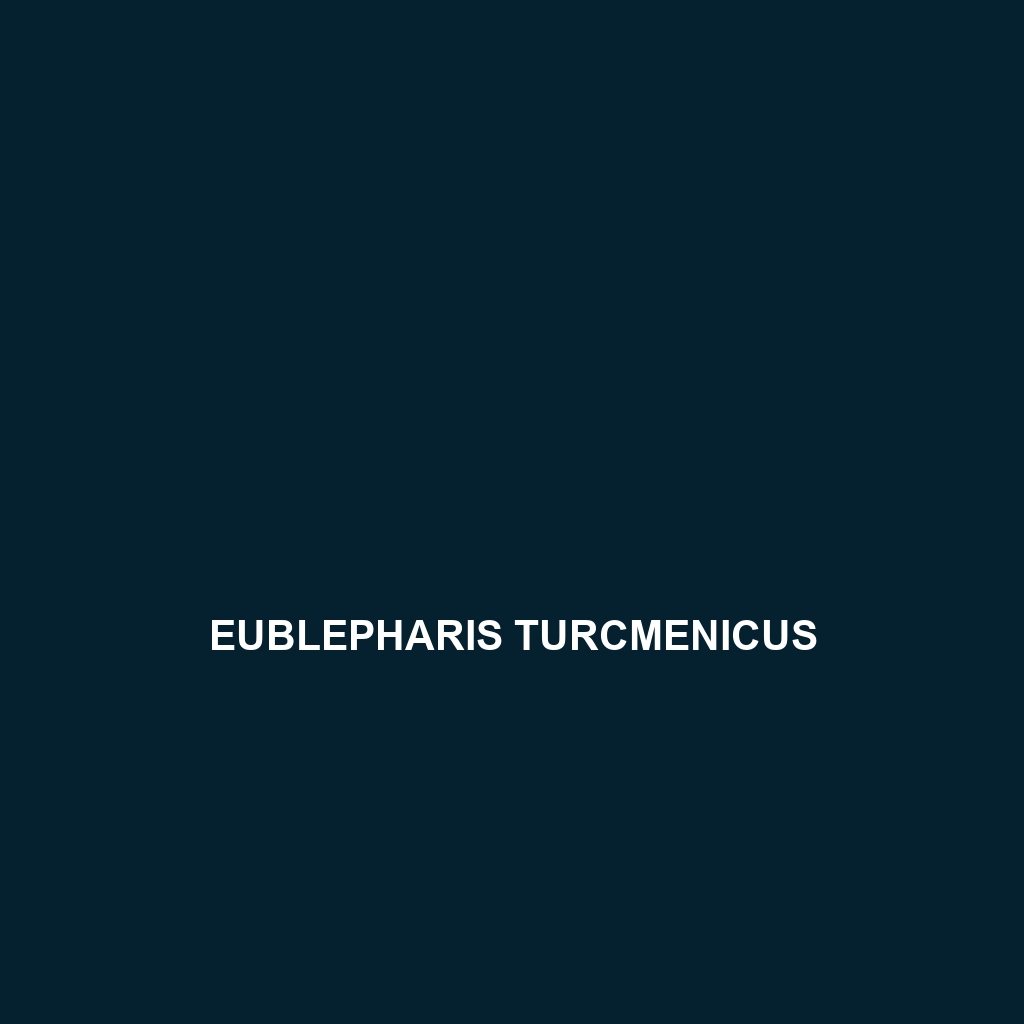Common Name
Eublepharis satpuraensis
Scientific Name
Eublepharis satpuraensis
Habitat
Eublepharis satpuraensis, commonly known as the Satpura leopard gecko, is primarily found in the lush, vibrant forests of the Satpura mountain range in India. This gecko thrives in a variety of habitats, including rainforests and temperate forests, characterized by high humidity, diverse plant life, and a warm climate. The Satpura range provides a unique blend of ecological niches ranging from lowland areas with dense underbrush to rocky outcrops that serve as perfect hiding spots. The region’s tropical monsoon climate, with significant rainfall during certain months, shapes the ecosystem and the behaviors of this fascinating species.
Physical Characteristics
Eublepharis satpuraensis exhibits striking physical features that set it apart from other gecko species. Typically, these geckos reach an average length of about 20-25 centimeters (8-10 inches). Their bodies are relatively stout with a distinctive pattern that includes light yellow or beige backgrounds adorned with dark brown or black spots, aiding in camouflage within their natural habitat. One of their most notable traits is their broad head with a flattened shape, large eyes, and well-defined eyelids, which are a characteristic feature of the Eublepharis genus. Such adaptations not only enhance their vision during nocturnal hours but also contribute to their overall hunting success.
Behavior
The behavior of the Satpura leopard gecko is particularly intriguing, reflecting its adaptations to a nocturnal lifestyle. Primarily active at night, Eublepharis satpuraensis employs nocturnal behavior to avoid daytime predators and to find food. Social interactions can often be observed during the mating season, with males displaying vivid colors and performing courtship rituals to attract females. The mating rituals include intricate body movements and vocalizations, which are essential for reproductive success. Furthermore, these geckos are known for their territorial nature, especially among males, who may engage in confrontations to defend their territory.
Diet
Eublepharis satpuraensis is classified as an insectivore, predominantly feeding on a variety of insects such as crickets, beetles, and larvae. Their diet may also include other small invertebrates, and during certain periods, they may indulge in the flesh of small rodents or other geckos. This varied diet is crucial for their growth and reproductive health, as it provides the necessary nutrients. The gecko’s hunting technique involves low-profile stalking to ambush unsuspecting prey effectively under the cover of darkness.
Reproduction
The reproductive cycle of Eublepharis satpuraensis is fascinating and involves several key phases. Breeding typically occurs during the warmer months in the monsoon season when food is abundant. The female lays two eggs per clutch, and these eggs undergo an incubation period of approximately 45-60 days before hatching. The offspring are independent as soon as they emerge, showcasing essential survival traits that allow them to thrive in their environment. Parental care is limited, as the young geckos are fully capable of hunting and avoiding predators shortly after hatching.
Conservation Status
As of current assessments, Eublepharis satpuraensis is classified as vulnerable due to habitat loss and degradation caused by human activities such as deforestation and urbanization. Conservation efforts are underway in their native regions to protect their natural habitats and mitigate threats from invasive species. It is crucial for local and national conservation organizations to prioritize the preservation of both the Satpura range and the unique ecosystems it supports, ensuring sustainable practices that benefit this vulnerable species.
Interesting Facts
One of the most captivating characteristics of Eublepharis satpuraensis is its remarkable ability to regenerate its tail after losing it, a common defense mechanism among geckos. This not only allows them to escape predators but also provides the opportunity to store fat reserves in their tails, crucial for survival during food scarcity. Furthermore, the Satpura leopard gecko’s unique vocalizations during courtship display a complex social structure and communication pattern, distinguishing it within the Eublepharis genus.
Role in Ecosystem
In its natural habitat, Eublepharis satpuraensis plays a vital role as a predator, controlling the population of various insect species. This predatory behavior contributes significantly to the ecological balance in the Satpura forests. Additionally, as prey for larger predators such as birds and snakes, they are an integral part of the food web. Thus, they serve as both a predator and prey, maintaining a dynamic equilibrium essential for the health of their ecosystem. Their presence also supports the intricate biodiversity within the region, emphasizing the need for continued conservation efforts.
This content is structured to provide a comprehensive overview of the species Eublepharis satpuraensis while incorporating relevant SEO-friendly keywords and phrases for optimal search engine visibility.
